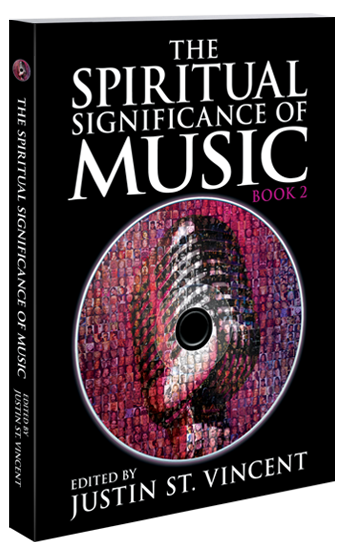Steve Miller
// author & teacherSTEVE MILLER is an author and teacher from Acworth, Georgia. His book “The Contemporary Christian Music Debate: Worldly Compromise Or Agent Of Renewal?” (2007) is available from Amazon.com. Steve Miller also produces resources for pastors, teachers, and youth workers.
Websites: www.character-education.info and www.youth-ministry.info
Photo: Steve Miller
Interview:
I first experienced the spiritual impact of music one Winter night on a ski retreat. I went to be with a girl I liked. God had other ideas. In a hotel conference room with about thirty other students, a young man talked very conversationally about a personal God who had given him peace and meaning in life. Then he played songs on his guitar that reinforced the message, songs in a style I related to, what ethnomusicologists might call my “heart songs”. That night I knelt beside my bed to give my life to a God who I believed loved me and came to give me the “abundant life” that Jesus talked. That was thirty four years ago, and I never got over it.
Music not only introduced me to a relationship with God, it helped sustain that relationship. I began listening to bands that followed God rather than railing against Him. It made a life of faith easier. Replacing lyrics like “I can’t get no satisfaction” with lyrics motivating me to serve God and others, the meditations of my heart began to coincide with the direction of my life. But many spiritual people rejected my choice of musical style. I liked the harder styles of the Resurrection Band and Petra. Many said that this melding of spiritual lyrics with “the world’s music” compromised the faith. So began my intellectual journey to discover the truth about the sources and power of musical styles.
My most fascinating discoveries lay in the history of Christian music. I found that the old hymns that my church sang were not originally religious styles at all. The tunes were in the popular styles of earlier eras, often exact copies of popular secular tunes. This reframed the question. Rather than, “should we use the world’s music?” people were really asking “Which era of the world’s music should we use?”
But the most intriguing discovery from the history of our hymns was the power of popular music when harnessed for the glory of God. Martin Luther, the great Reformation leader of the 1500’s, wrote hymns in the popular styles of his day. The result? Some would say that his songs won more souls than his teachings. His hymns:
“were carried from place to place in the form of leaflets, or were sung in towns and villages by wandering minstrels. Memorized by young and old throughout Germany, they paved the way for the Reformation.”1
An opponent of Luther complained that “Luther’s hymns have destroyed more souls than his writings and speeches.”2 A Spanish monk noted:
“It is surprising how those hymns spread Lutheranism. Written in German, they literally flew out of Luther’s study, landing in homes, in places of work, and were sung in the markets, in the streets, and on the field.”3
This power of spiritual lyrics in popular styles was rediscovered over and over throughout the history of the church. God used John and Charles Wesley to bring about spiritual renewal in the 1700’s. One of their greatest tools was their music. Charles would:
“seize upon any song of the theater or the street the moment it became popular and make it carry some newly written hymn into the homes of the people.”4
Thus, their Methodist hymns “became the most powerful tool of evangelism England ever knew.”5
Need I tell about the power of music during the Great Awakenings or the earth-shaking Moody and Sankey revivals? D. L. Moody once said, “Singing does at least as much as preaching to impress the Word of God upon people’s minds.”6
Understanding the power of music through Christian history puts my experience as a sixteen-year-old into perspective. Someone dared to put a lifechanging message into a style I would listen to in my car and sing in the shower. I hope others continue to put life-changing messages into all the styles that move people today, so that another sixteen-year-old, somewhere tonight, just might hear God speak through a style he can relate to. Maybe they will understand for the first time that God can relate, and that God cares.
End Notes:
1 Theodore Hoetty-Nickel, Luther and Culture, Martin Luther Lectures, vol. 4, (Decorah, Iowa: Luther College Press, 1960), p. 169.
2 Hymni Lutheri animos plures, quam scripta et declamationes occiderunt (1620), cited by Koch, vol. I, 244; quoted by Hoetty-Nickel, Luther and Culture, p. 170.
3 Thesaurus Sapientiae, Book VIII, Part II (Antwerp, 1603), 41; cited by Hoetty-Nickel, Luther and Culture, p. 170.
4 Harold Myra and Dean Merrill, Rock, Bach, and Superschlock (Philadelphia: J.B. Lippincott, 1972), p. 93; quoted in Donald Paul Ellsworth, Christian Music In Contemporary Witness (Grand Rapids, Mich.: Baker Book House, 1979), p. 73.
5 Donald Paul Ellsworth, Christian Music In Contemporary Witness, p. 75.
6 T.H. Hall, Biography of Gospel Song and Hymn Writers (New York: AMS Press, 1971), p. 198-199; quoted in James Sallee, A History of Evangelistic Hymnody (Grand Rapids, Mich.: Baker Book House, 1979), p. 58.
“Music not only introduced me to a relationship with God, it helped sustain that relationship.”
– Steve Miller, author of “The Contemporary Christian Music Debate”


